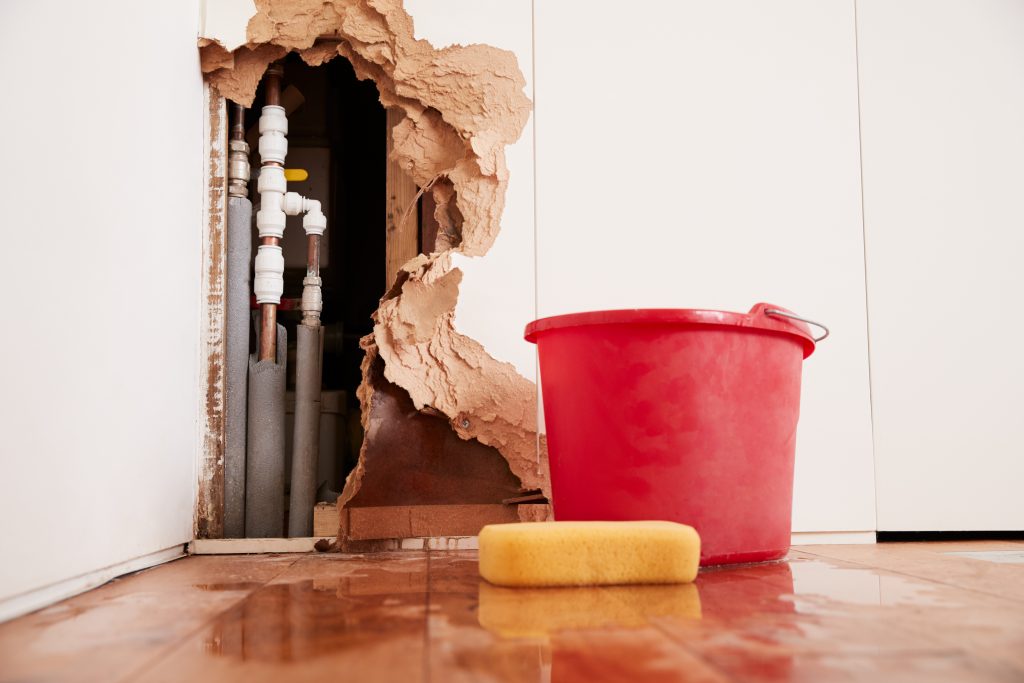6 Ways to Find Hidden Water Leakages in Your Residence
6 Ways to Find Hidden Water Leakages in Your Residence
Blog Article
We have come across this post involving Hacks to detect leaks below on the internet and think it made good sense to share it with you here.

Early discovery of leaking water lines can mitigate a potential disaster. Some tiny water leakages may not be visible.
1. Check Out the Water Meter
Every house has a water meter. Checking it is a proven manner in which aids you uncover leakages. For starters, turn off all the water resources. Make sure nobody will purge, utilize the tap, shower, run the cleaning maker or dishwasher. From there, go to the meter as well as watch if it will certainly transform. Given that nobody is using it, there ought to be no motions. That shows a fast-moving leakage if it moves. If you detect no modifications, wait an hour or 2 and check back once more. This indicates you may have a sluggish leakage that could even be below ground.
2. Inspect Water Usage
If you find abrupt adjustments, regardless of your consumption being the very same, it implies that you have leakages in your plumbing system. An abrupt spike in your costs indicates a fast-moving leakage.
At the same time, a steady rise each month, despite the same practices, shows you have a slow leakage that's additionally slowly escalating. Call a plumber to extensively inspect your residential property, particularly if you really feel a cozy area on your flooring with piping underneath.
3. Do a Food Coloring Examination
When it comes to water consumption, 30% comes from commodes. If the color somehow infiltrates your dish during that time without flushing, there's a leakage between the storage tank and dish.
4. Asses Exterior Lines
Don't fail to remember to examine your outdoor water lines as well. Should water leak out of the link, you have a loosened rubber gasket. One small leakage can waste heaps of water and also spike your water expense.
5. Inspect and Examine the Scenario
Property owners must make it a behavior to check under the sink counters as well as also inside closets for any kind of bad odor or mold growth. These two red flags suggest a leakage so punctual focus is called for. Doing routine evaluations, even bi-annually, can conserve you from a significant trouble.
Examine for stainings as well as compromising as many home appliances and pipelines have a life span. If you think leaking water lines in your plumbing system, do not wait for it to intensify.
Early detection of dripping water lines can alleviate a potential calamity. Some small water leaks might not be noticeable. Checking it is a proven method that helps you uncover leakages. One tiny leakage can lose lots of water and increase your water expense.
If you suspect leaking water lines in your plumbing system, do not wait for it to intensify.
WARNING SIGNS OF WATER LEAKAGE BEHIND THE WALL
PERSISTENT MUSTY ODORS
As water slowly drips from a leaky pipe inside the wall, flooring and sheetrock stay damp and develop an odor similar to wet cardboard. It generates a musty smell that can help you find hidden leaks.
MOLD IN UNUSUAL AREAS
Mold usually grows in wet areas like kitchens, baths and laundry rooms. If you spot the stuff on walls or baseboards in other rooms of the house, it’s a good indicator of undetected water leaks.
STAINS THAT GROW
When mold thrives around a leaky pipe, it sometimes takes hold on the inside surface of the affected wall. A growing stain on otherwise clean sheetrock is often your sign of a hidden plumbing problem.
PEELING OR BUBBLING WALLPAPER / PAINT
This clue is easy to miss in rooms that don’t get much use. When you see wallpaper separating along seams or paint bubbling or flaking off the wall, blame sheetrock that stays wet because of an undetected leak.
BUCKLED CEILINGS AND STAINED FLOORS
If ceilings or floors in bathrooms, kitchens or laundry areas develop structural problems, don’t rule out constant damp inside the walls. Wet sheetrock can affect adjacent framing, flooring and ceilings.
https://www.servicemasterbyzaba.com/blog/how-to-detect-water-leakage-in-walls/

As a fervent reader about Leaking water lines, I thought sharing that piece of content was really useful. Sharing is caring. You won't know, you may be doing someone a favor. Thanks for going through it.
Report this page